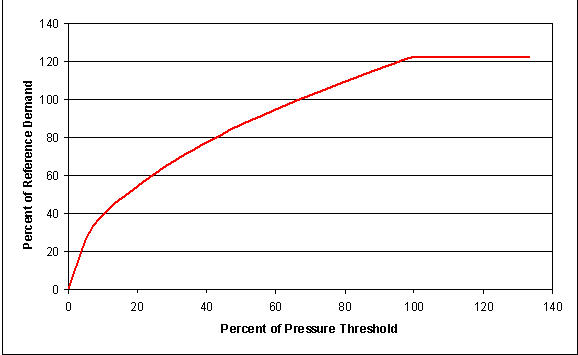Pressure Dependent Demand
Whenever a calamity occurs, the systems pressures are affected. Some locations may not have the required pressure. Nodal demand, water available at a location, is dependent on the pressure at the node when the pressure is low. Unlike the conventional approach of demand driven analysis, demand is a function of pressure, Pressure Dependent Demand (PDD). However, it is believed that a junction demand is not affected by pressure if the pressure is above a threshold. The junction demand is reduced when the pressure is dropping below the pressure threshold and it is zero when the pressure is zero.
PDD can be defined as one of two pressure demand relationships including a power function and a pressure demand piecewise linear curve (table). The power function is given as:

Where:
Hi = calculated pressure at node iQri = requested demand or reference demand at node iQsi = calculated demand at node iHri = reference pressure that is deemed to supply full requested/reference demandHt = pressure threshold above which the demand is independent of nodal pressure
= exponent of pressure demand relationship.
A typical PDD power function is illustrated below. The actual demand increases to the full requested demand (100%) as pressure increases but remains constant after the pressure is greater than the pressure threshold, namely the percent of pressure threshold is greater than 100%.
Pressure demand piecewise linear curve is specified as a table of pressure percentage vs. demand percentage. Pressure percentage is the ratio of actual pressure to a nodal threshold pressure while demand percentage is the ratio of the calculated demand to the reference demand.

